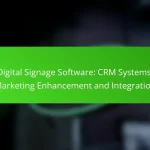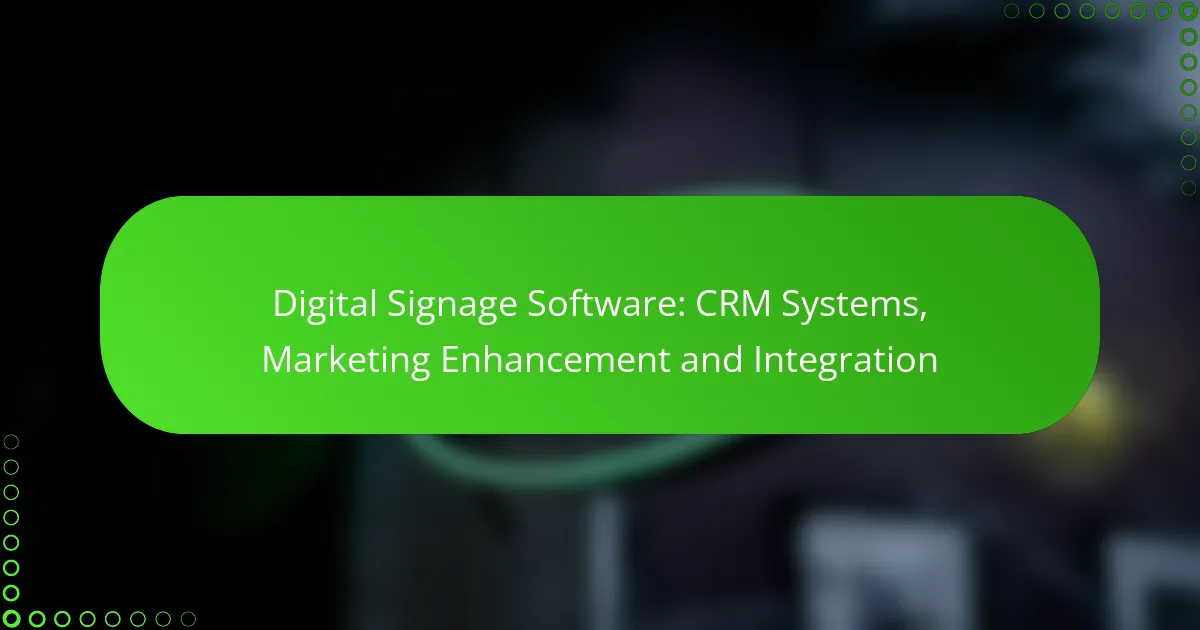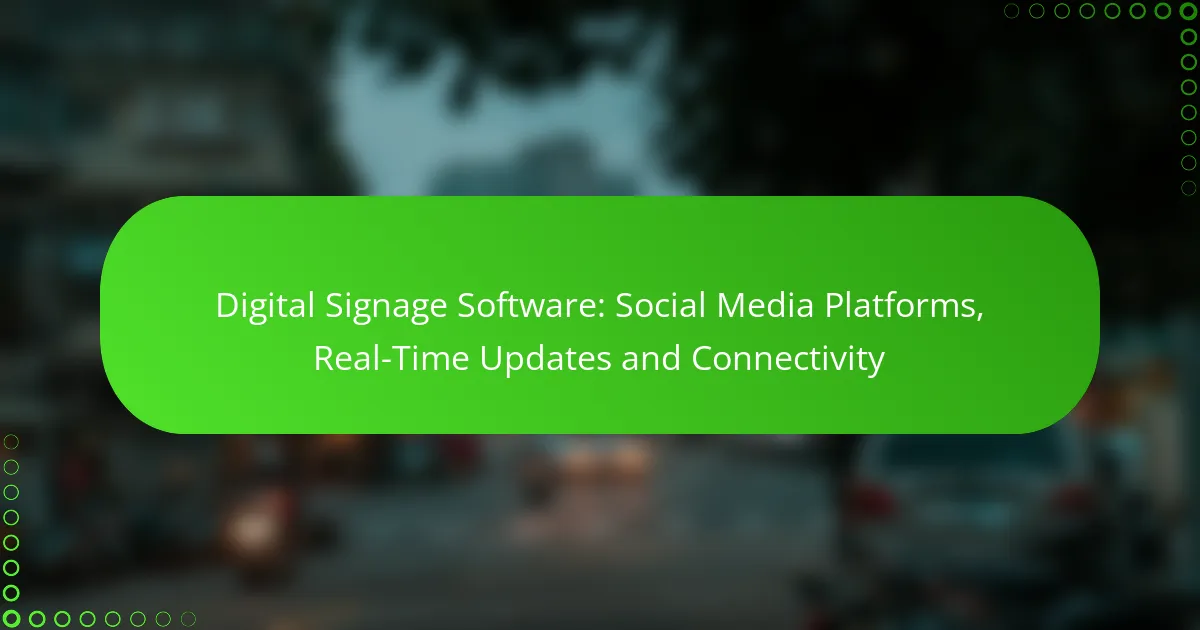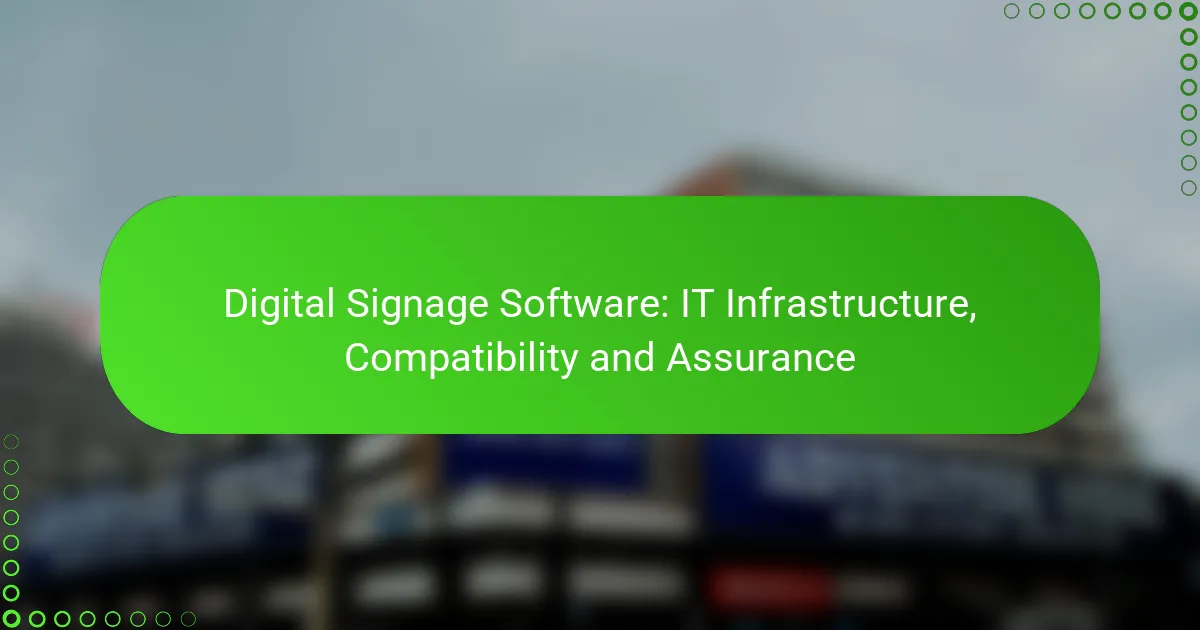Digital signage software plays a crucial role in enhancing CRM systems and marketing strategies by delivering dynamic, targeted content that engages customers. By integrating visual displays with customer data, businesses can provide personalized messages that strengthen relationships and boost sales. Leading solutions like Scala Digital Signage and BrightSign offer unique features tailored to meet diverse business needs, making them essential tools for effective communication and marketing enhancement.
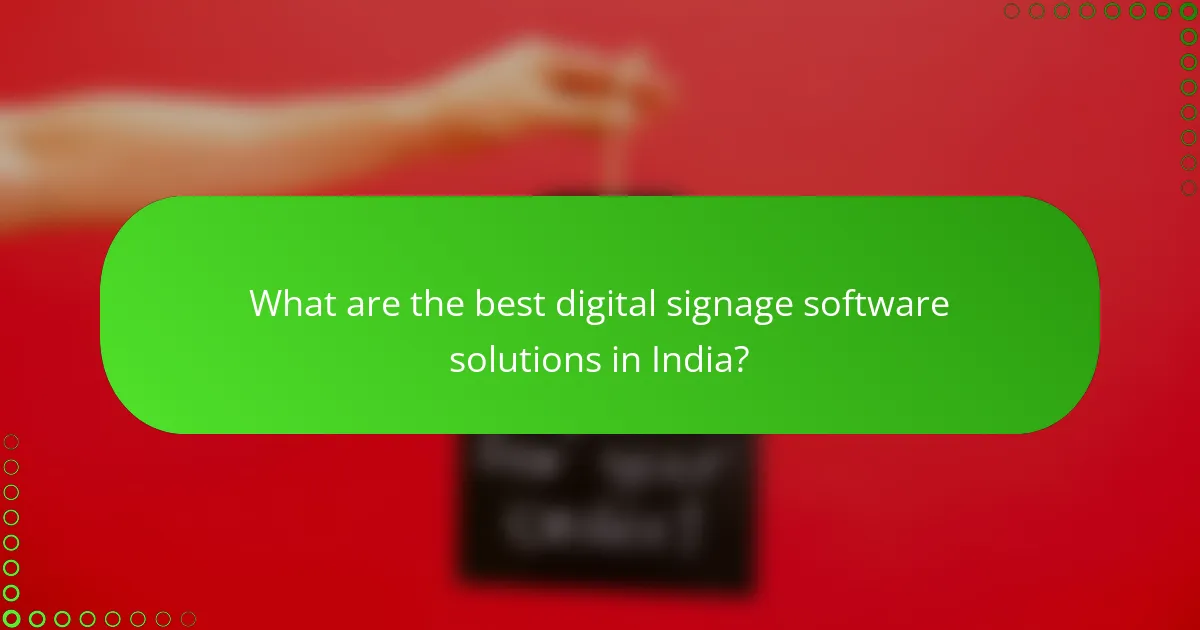
What are the best digital signage software solutions in India?
Some of the top digital signage software solutions in India include Scala Digital Signage, BrightSign, ScreenCloud, Yodeck, and Signagelive. Each of these platforms offers unique features tailored to enhance marketing efforts and integrate with existing systems, making them suitable for various business needs.
Scala Digital Signage
Scala Digital Signage is a robust platform known for its flexibility and scalability. It allows businesses to create customized content that can be displayed across multiple screens, making it ideal for large enterprises or retail chains.
Consider Scala if you need advanced features like real-time data integration and interactive content. Its user-friendly interface simplifies content management, but be prepared for a steeper learning curve if you want to utilize its full potential.
BrightSign
BrightSign is a popular choice for its reliable hardware and software combination, providing high-quality playback and ease of use. It supports a wide range of media formats and offers cloud management capabilities for remote updates.
This solution is particularly effective for businesses looking to deploy digital signage quickly without extensive technical knowledge. However, ensure that your hardware choices align with your content needs to avoid compatibility issues.
ScreenCloud
ScreenCloud is a cloud-based digital signage solution that enables users to manage content from anywhere. It is particularly user-friendly, making it suitable for small to medium-sized businesses that require a straightforward setup.
With features like app integrations and customizable templates, ScreenCloud allows for rapid content deployment. However, businesses should consider their internet reliability, as a stable connection is crucial for optimal performance.
Yodeck
Yodeck stands out for its affordability and ease of use, making it a great option for startups and small businesses. It offers a free plan with basic features, allowing users to test the platform before committing financially.
The platform supports various media types and includes scheduling options for content display. However, users should be aware that advanced features may require upgrading to a paid plan, which could impact budget considerations.
Signagelive
Signagelive is known for its versatility and extensive app marketplace, allowing users to enhance their digital signage experience with various integrations. It supports both cloud and on-premise deployments, catering to different business preferences.
This solution is ideal for companies looking for a customizable experience. However, businesses should evaluate their specific needs to ensure they select the right plan, as pricing can vary significantly based on features and usage levels.
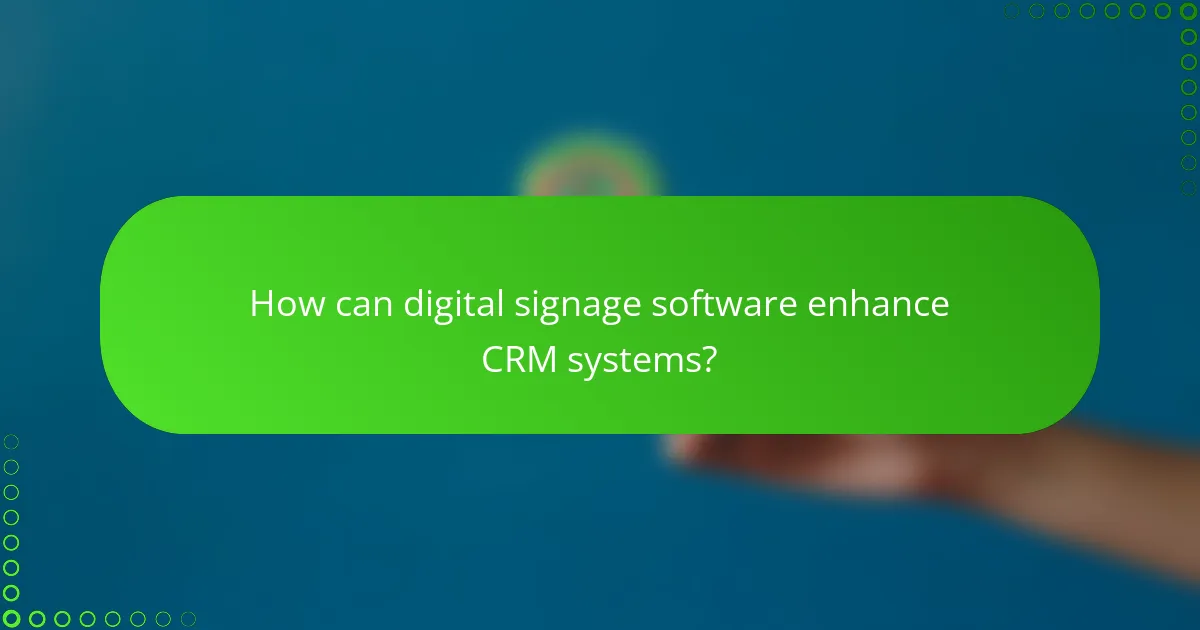
How can digital signage software enhance CRM systems?
Digital signage software can significantly enhance CRM systems by providing dynamic content that engages customers and improves communication. By integrating visual displays with customer data, businesses can deliver personalized messages and updates that foster stronger relationships and drive sales.
Integration with Salesforce
Integrating digital signage software with Salesforce allows businesses to display real-time customer information and marketing materials directly on screens. This connection can streamline workflows, enabling sales teams to access vital data quickly and present tailored offers to clients. For example, a retail store can showcase targeted promotions based on customer purchase history, enhancing the shopping experience.
Customer engagement analytics
Digital signage software can track customer engagement through various metrics, such as view times and interaction rates. By analyzing this data, businesses can gain insights into customer preferences and behavior, allowing for more effective marketing strategies. For instance, a restaurant might use analytics to determine which menu items attract the most attention, helping to optimize their offerings.
Real-time updates for customer interactions
Real-time updates provided by digital signage software can enhance customer interactions by ensuring that the latest information is always available. This can include updates on inventory, promotions, or events, which keeps customers informed and engaged. For example, a bank might display current wait times or service availability, improving customer satisfaction and reducing frustration.
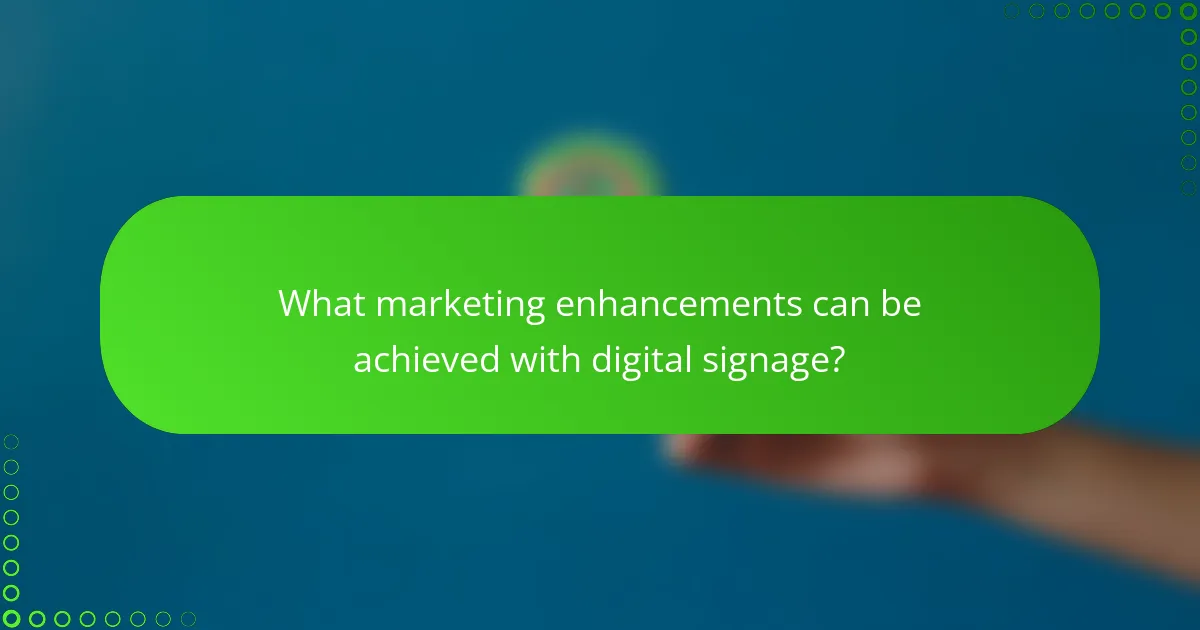
What marketing enhancements can be achieved with digital signage?
Digital signage can significantly enhance marketing efforts by delivering targeted content, engaging customers interactively, and allowing for real-time updates. These capabilities help businesses capture attention, improve customer experiences, and drive sales effectively.
Targeted advertising campaigns
Targeted advertising campaigns leverage customer data to display relevant messages based on demographics, location, or behavior. By analyzing customer profiles, businesses can tailor their content to specific audiences, increasing engagement and conversion rates.
For instance, a retail store might show promotions for athletic gear near a gym during peak hours, while a café could advertise breakfast specials in the morning. This strategic placement maximizes the impact of advertising efforts.
Dynamic content updates
Dynamic content updates allow businesses to change their messaging in real-time based on various factors such as inventory levels, time of day, or current promotions. This flexibility ensures that the displayed information is always relevant and timely.
For example, a restaurant can update its menu board to reflect daily specials or highlight sold-out items instantly, minimizing customer disappointment. Utilizing digital signage software that integrates with inventory systems can streamline this process.
Interactive customer experiences
Interactive customer experiences engage users directly, encouraging them to participate in the marketing process. Digital signage can incorporate touch screens or QR codes, allowing customers to access additional information or promotions by interacting with the display.
For example, a clothing store might use interactive kiosks where customers can browse styles, check sizes, or even place orders. This not only enhances customer satisfaction but also provides valuable data on customer preferences and behaviors.
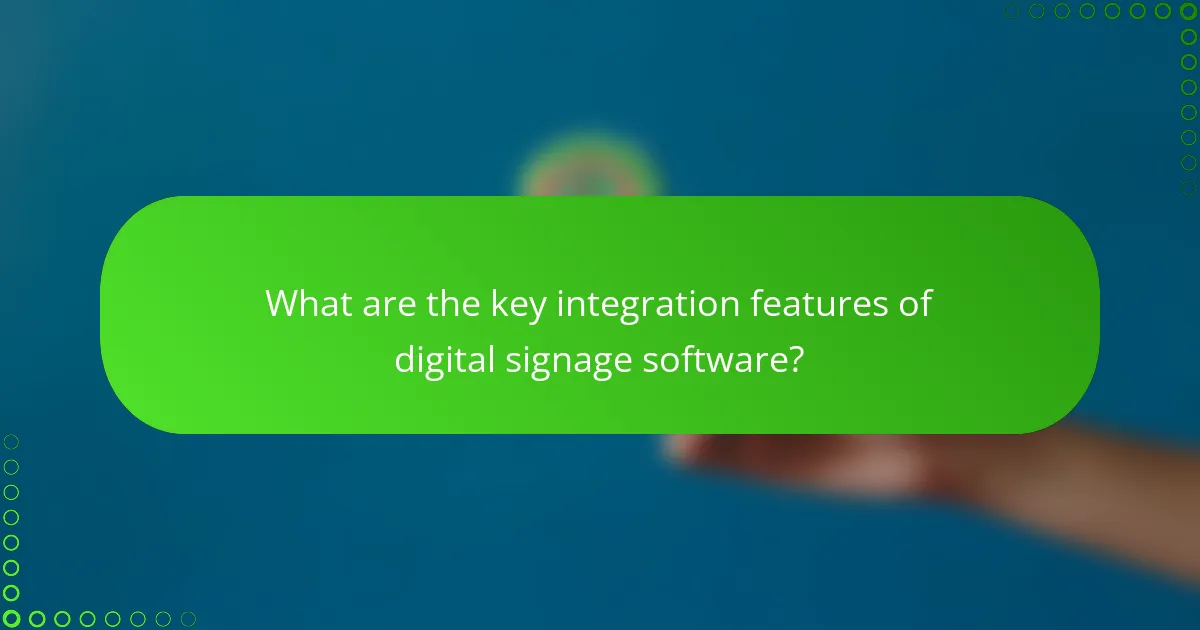
What are the key integration features of digital signage software?
Key integration features of digital signage software include the ability to connect with various third-party tools, social media platforms, and data feeds. These integrations enhance marketing efforts, streamline operations, and improve content delivery across digital displays.
API support for third-party tools
API support allows digital signage software to connect seamlessly with other applications, such as customer relationship management (CRM) systems, content management systems (CMS), and analytics tools. This integration enables businesses to automate content updates and synchronize data across platforms.
When selecting digital signage software, consider the available APIs and their compatibility with your existing tools. Look for software that offers robust documentation and support to facilitate integration.
Social media integration
Social media integration enables digital signage to display real-time content from platforms like Facebook, Twitter, and Instagram. This feature helps businesses engage their audience by showcasing user-generated content, promotions, and live updates.
To effectively use social media integration, ensure your digital signage software can pull content from multiple platforms. Set clear guidelines for what type of content to display to maintain brand consistency and avoid inappropriate posts.
Data feed capabilities
Data feed capabilities allow digital signage software to pull in information from external sources, such as weather updates, news feeds, or inventory levels. This feature keeps content dynamic and relevant, enhancing viewer engagement.
When implementing data feeds, prioritize reliable sources to ensure accuracy. Regularly review and update your data feed configurations to align with changing business needs and audience interests.

What criteria should be considered when selecting digital signage software?
When selecting digital signage software, consider factors such as scalability, user-friendliness, and cost-effectiveness. These criteria will help ensure that the software meets your current needs while accommodating future growth and budget constraints.
Scalability for business growth
Scalability is crucial for businesses expecting growth. Choose software that can easily expand to support additional screens, locations, or content types without requiring a complete overhaul. Look for solutions that offer tiered pricing or modular features to accommodate your evolving needs.
For example, a small retail store may start with a single screen but might want to add more displays as it grows. Ensure that the software can handle this transition smoothly, allowing for easy updates and management of multiple displays from a central dashboard.
User-friendly interface
A user-friendly interface is essential for effective digital signage management. Software should allow users to create, schedule, and update content with minimal training. Look for intuitive drag-and-drop features and clear navigation to streamline the user experience.
Consider testing the software with a trial version to assess its usability. If the interface is complex, it may lead to errors and increased training costs, which can hinder your marketing efforts.
Cost-effectiveness
Cost-effectiveness involves evaluating both upfront and ongoing expenses associated with the digital signage software. Compare pricing models, including one-time purchases versus subscription fees, and consider any additional costs for updates or support.
For instance, a subscription model might seem lower in initial costs but could accumulate higher expenses over time. Assess your budget and calculate the total cost of ownership to ensure the software aligns with your financial goals.

